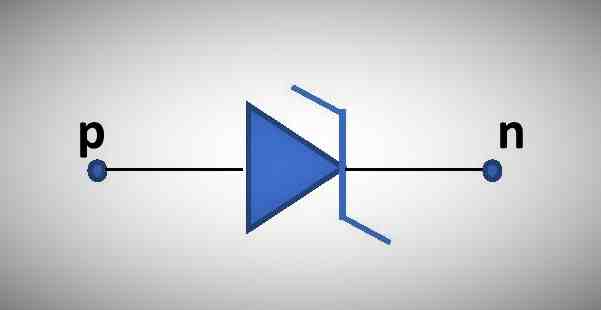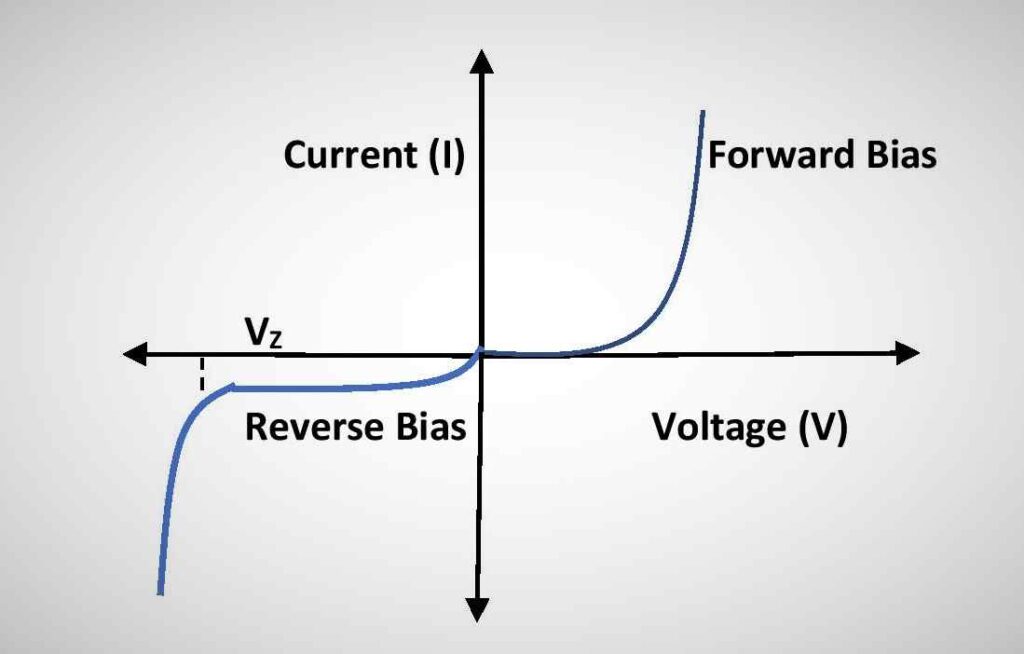We already discussed the Semiconductor material and a semiconductor device p-n junction diode. From the latter one, we became to know that a normal P-N junction diode cannot operate at high reverse bias voltage because of the breakdown in diodes. To operate at high reverse bias voltage, a diode is to be designed in a special way. Zener diode is such kind of device that can operate well in the breakdown region and it has many applications too. In this article, we are going to discuss the basic concepts of Zener diode and its application as a Voltage regulator.
Contents of this article:
- Zener diode
- Symbol of Zener diode
- I-V curve of Zener Diode
- Use of Zener diode as Voltage Regulator
- Load Regulation
- Line Regulation
What is a Zener Diode?
Zener diode is a special type of p-n junction diode with a high doping concentration to operate at the breakdown region. It is used as a voltage regulator to fix the output voltage at a constant value across an electronic circuit. Due to high doping, the width of the depletion layer of the Zener diode is very small.
Normal diodes cannot tolerate a high reverse bias voltage due to breakdown. But a Zener diode has higher power dissipation capability to handle a high current both in forward and reverse bias conditions.
Suggested Article: Types of Breakdown in Diodes
Symbol of Zener diode
The symbol of the Zener diode is as below.

I-V characteristics of Zener diode:
In the Current vs Voltage characteristics of the Zener diode, one can see that the forward bias condition is the same as that of a normal diode. But at reverse bias, the current increases exponentially after a certain value of reverse bias voltage. This voltage is the Zener breakdown voltage (Vz).

Applications of Zener diode
The main purpose of the Zener diode is to fix the output voltage at a constant value. That means a Zener diode works as a Voltage regulator in an electronic circuit.
Voltage regulator with Zener diode
A voltage regulator is a device or combination of circuit elements that can fix the output voltage of a supply at a particular constant value.
Zener diode is a special type of diode that is designed to operate in the breakdown region of diode. The voltage across the Zener diode in breakdown region becomes almost independent of the current through it. This makes the Zener diode useful as a voltage regulator.
The circuit diagram of a voltage regulator using a Zener diode is as below. Here, Vi is the input voltage, RL is the load resistance, Vz is the Zener breakdown voltage of the diode and Ri is the current limiting resistance.

If Ii, Iz and IL be the input current, Zener current and load current respectively, then Ii = Iz+ IL …..….. (1)
and the output voltage, Vo = ILRL = Vz ………….. (2)
There are two ways to use a Zener diode as a voltage regulator, these are
- Load Regulation
- Line Regulation
Load Regulation using Zener Diode
If the output voltage is regulated by varying the load resistance RL , keeping the input power supply voltage (Vi)constant, then the regulation is called the Load regulation.
Since RL is varying, the load current (IL ) is also varying. Again, the input current Ii is constant as the input voltage Vi is not varying. Then, from equation-(1), we observe that the Zener current balances any change in the load current. If the Load current increases, the Zener current decreases and vice-versa. Since the output voltage (Vz) is independent of Zener current then the output remains constant at Vz even when the load varies.
Line Regulation using Zener Diode
If the output voltage is regulated by varying the input voltage Vi, keeping the load resistance RL constant, then the regulation is called the Line regulation of Zener diode.
Since RL is constant, the load current IL also remains fixed. Now, the input current Ii varies due to the variation of input voltage Vi. Then from equation-(1), we can see that any change of input current is balanced by the Zener current. Since the Zener voltage is almost independent of the Zener current at the breakdown region, the output voltage remains the same at Vz.
Note: To use a Zener diode as a voltage regulator it is necessary to have the Zener voltage (Vz) less than the equivalent input voltage. Also, the Zener current should not exceed its maximum rating.
This is all from this article on the Applications of Zener diode as a voltage regulator. If you still have any doubts or queries on this topic, feel free to ask me in the comment section.
Thank You!
Related Posts:

5 thoughts on “Applications of Zener diode as voltage regulator”
Comments are closed.